Versi Bahasa Indonesia: https://indonesia.tripcanvas.co/id/jakarta/liburan-akhir-pekan-seru/
Written by Leo Daphne
Co-written by Matin Firas Harahap and Cisca Lim
Tired of the city life in Jakarta? Yearning to find adventure on weekends, when you can finally get away from your daily work routine and the trappings of a concrete jungle?
If your wanderlust is that strong, we’re guessing that even our best unique themed restaurants and exciting modern entertainment in the city would be insufficient to satisfy you.
What you need is a short weekend getaway where you can fill your eyes, heart and soul with majestic sights and immerse yourself in cultural activities.
So what are you waiting for? Join us now to 7 destinations within driving distance from Jakarta, where you would be at risk of extending your holiday!
1. Of Cultural Treasures and Natural Wonders: Banten
Unlike other destinations in West Java, Banten is not dominated by mountainous landscape.
Here, you can find exotic beaches, the famous Ujung Kulon National Park, and unique cultures that have been preserved for centuries.
So if you love the natural and the ancient, come check out our recommendations!
1-a. Discover hidden beaches: Tanjung Lesung and Sawarna
If you ask your friends about beaches in Banten, the popular Pantai Carita Anyer would dominate the answers.
But if you’re looking for pristine sand and sea that are quieter and off-the-beaten tracks, you can travel to Tanjung Lesung and Sawarna.
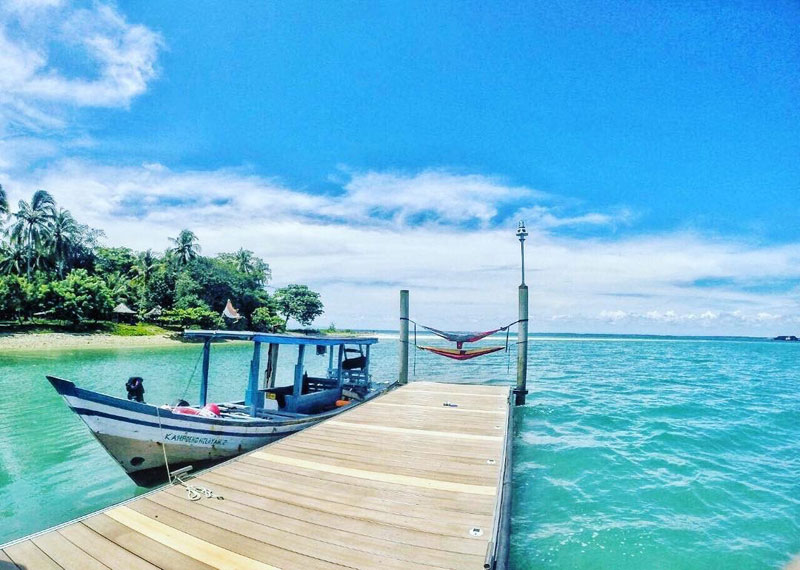
Tanjung Lesung is nestled along the West Coast of Java, and their white sandy beaches are known as good surfing destinations and calm swimming spots with healthy reefs to explore. You can also see Krakatau from the beaches, and even travel there from Tanjung Lesung!
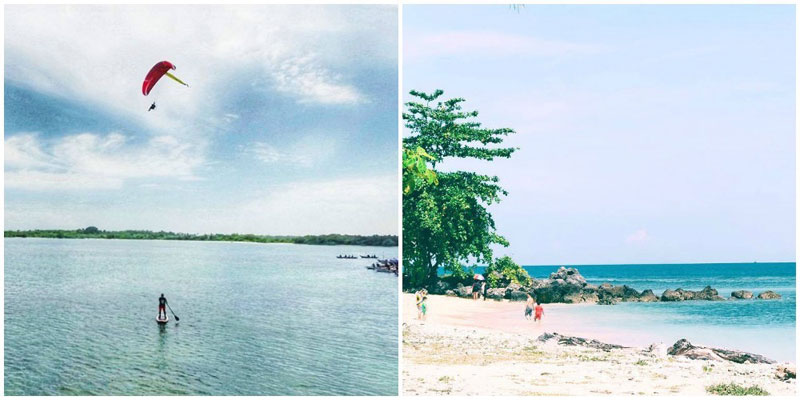
Though there are less accommodations than in Anyer (which makes this place much more tranquil), there are still some local homestays and resorts to choose from.
Another place that’s gaining more hype is Sawarna in the south. Like Tanjung Lesung, there are many beaches to visit around there, only that there are more iconic rocks on Sawarna’s beaches.
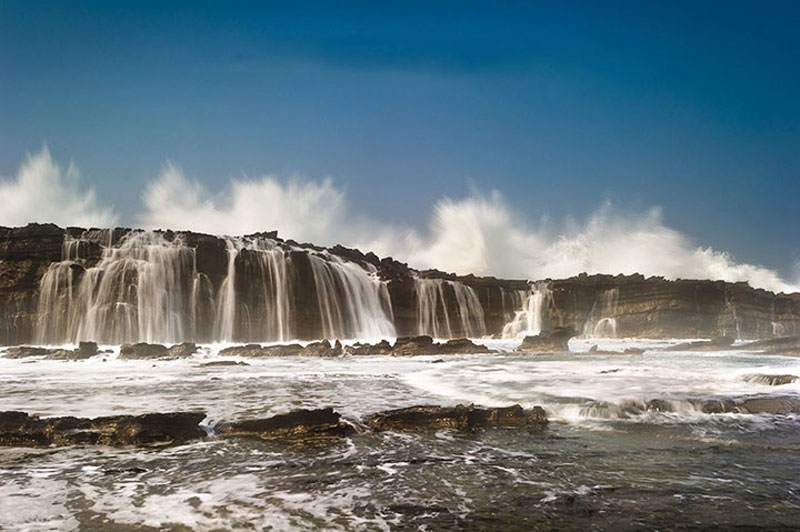
You can also swim, surf, and explore the underwater here.
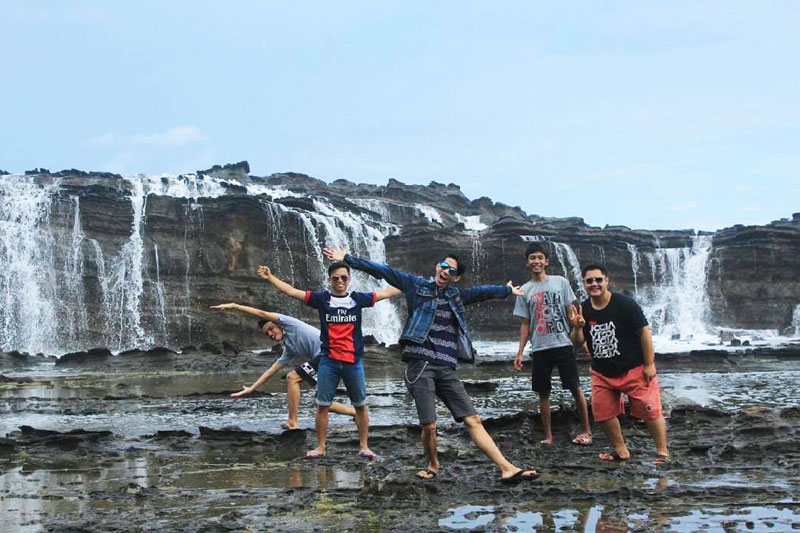
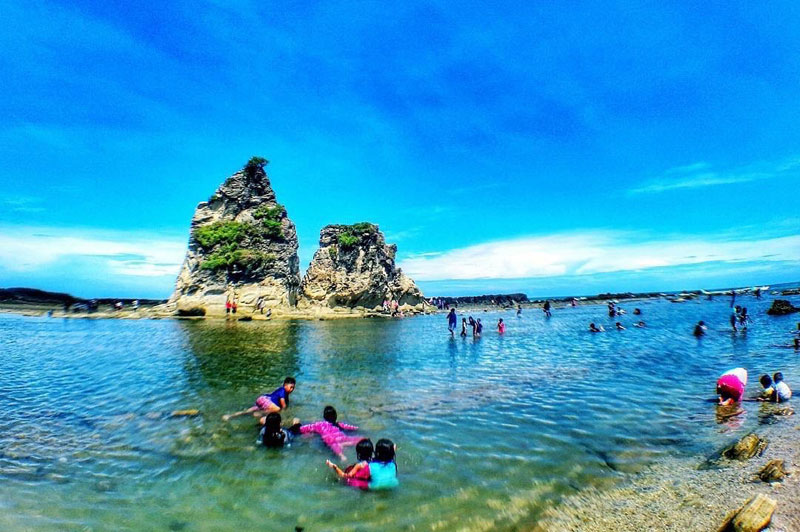
And if you want to move away from the beach a little, why not explore the village and enjoy the green paddy fields?
Tanjung Lesung and Sawarna
1-b. Explore Banten’s National Park: Ujung Kulon National Park
This is where you can spot some of the rarest animals on earth – the one-horned Javan rhinoceros!
As one of eight UNESCO’s world heritage site in Indonesia, Ujung Kulon National Park boasts of housing several species of endangered plants and animals.
But as there are less than 70 of the endangered rhinos within the 76,000-hectare land, you will have to be very lucky to chance upon them!
You can also spot a wide variety of birds, wild cattle (banteng), otters, deer, monkeys and monitor lizards in the park, and even predators such as panthers, pythons, and crocodiles around the river.
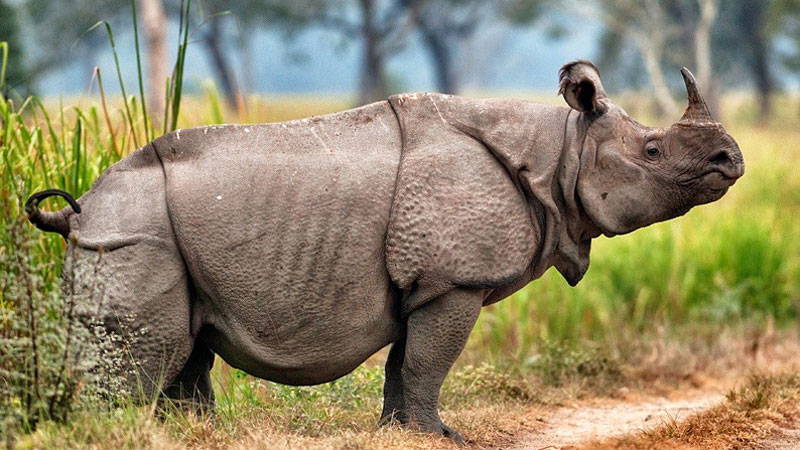
If you’re up for some exercise and want to explore the natural surroundings, not only can you hike up to the peak of the national park, but you can also do some jungle trekking and snorkeling in Peucang Island or the other islands around.
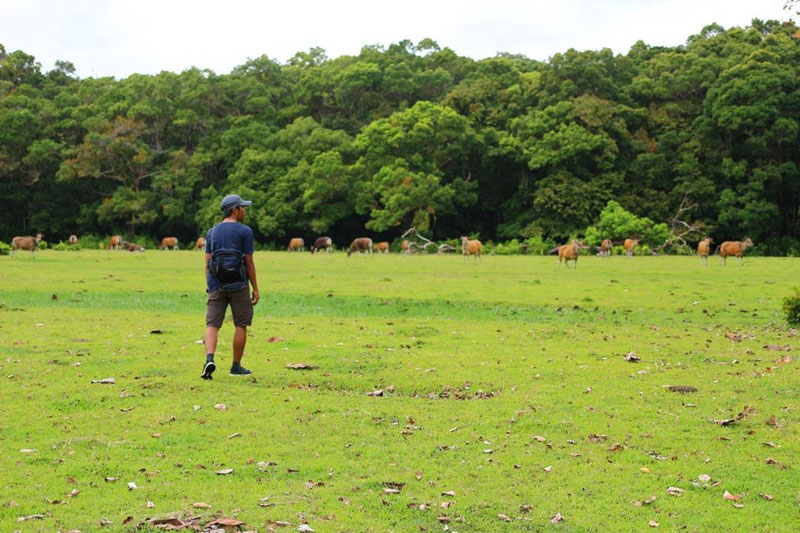
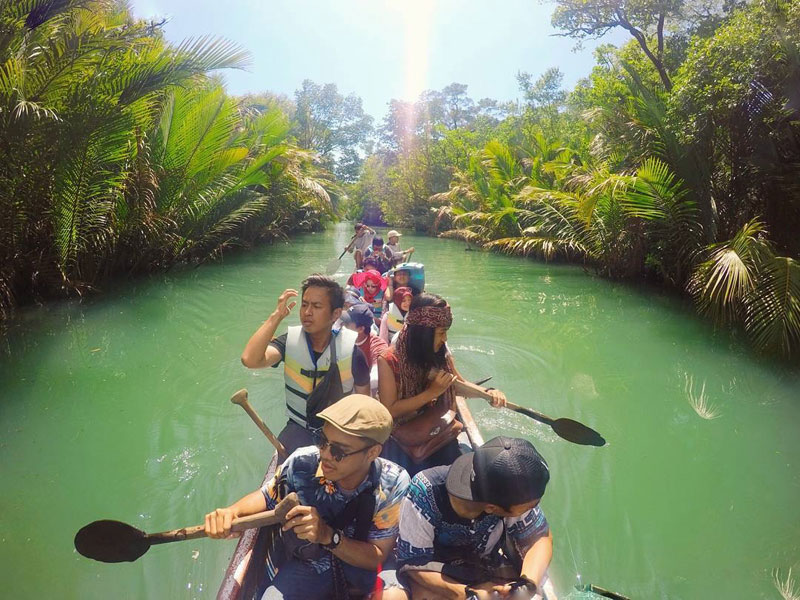
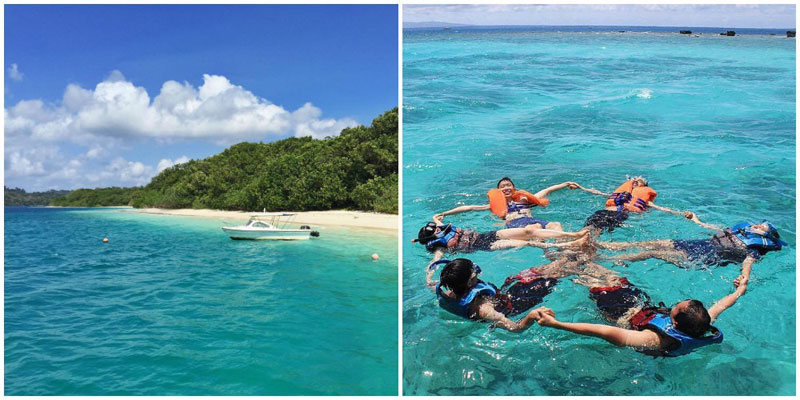
What are you waiting for? Let your adventure begin!
Ujung Kulon National Park
1-c. Visit an Isolated Tribe Trapped in Time: Baduy Luar
Have you heard of the Baduy tribe that resides in Lebak Regency in Banten?
Yes, the tribe that does not use electricity and any form of modern devices such as phones and even vehicles.
The origin of the names came from the term ‘bedouin’ given by Dutch researchers to liken the tribe with Arabian people who live nomadic lives or outside the city. Ethnically descended from the Sundanese, the Baduys call themselves the ‘Kanekes’ people, and practise animism as their religion.
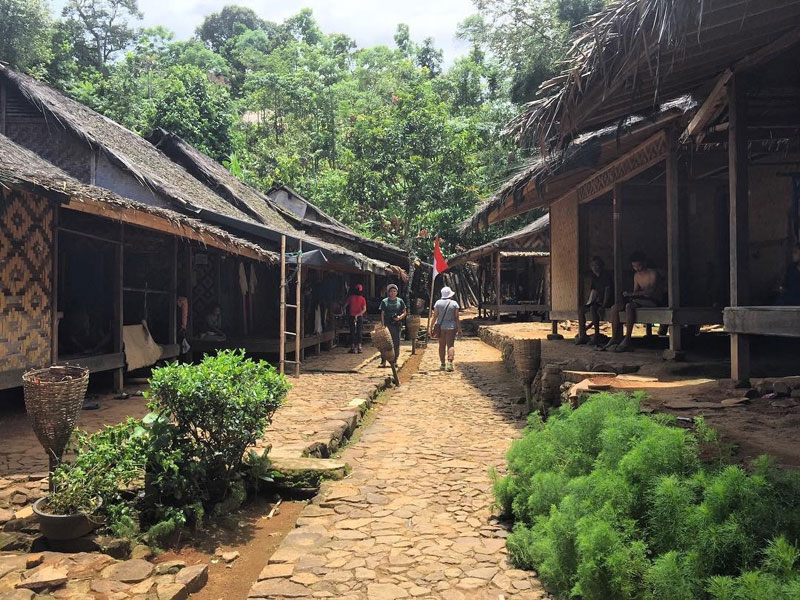
This tribe guards their culture and traditions so protectively that they have rejected any form of modern influences of the outside world, so yes, no electricity, phones or other electronic devices, no schools, soap, toothpaste… Basically there are no traces that these people are living in the 21st Century.
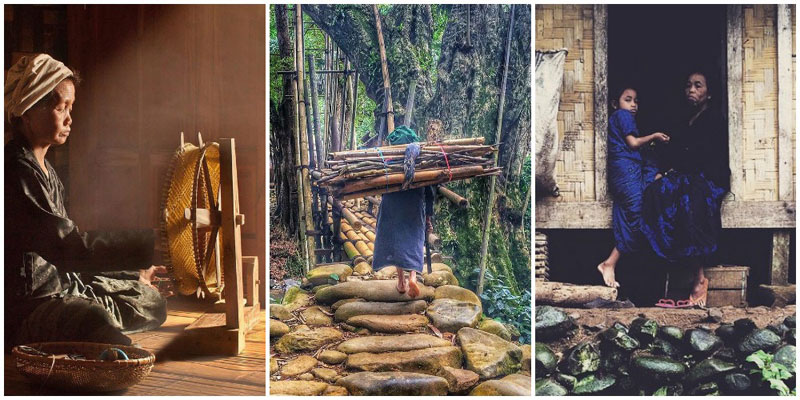
Although they tend to keep a distance from the external world, travellers can visit the Baduy Luar (which means the ‘Outside Baduy’), observe their way of life, and even stay there. The Baduy Luar are more moderate and commercially-aware than the people of Baduy Dalam (‘Inside Baduy’) who are cultural fundamentalists.
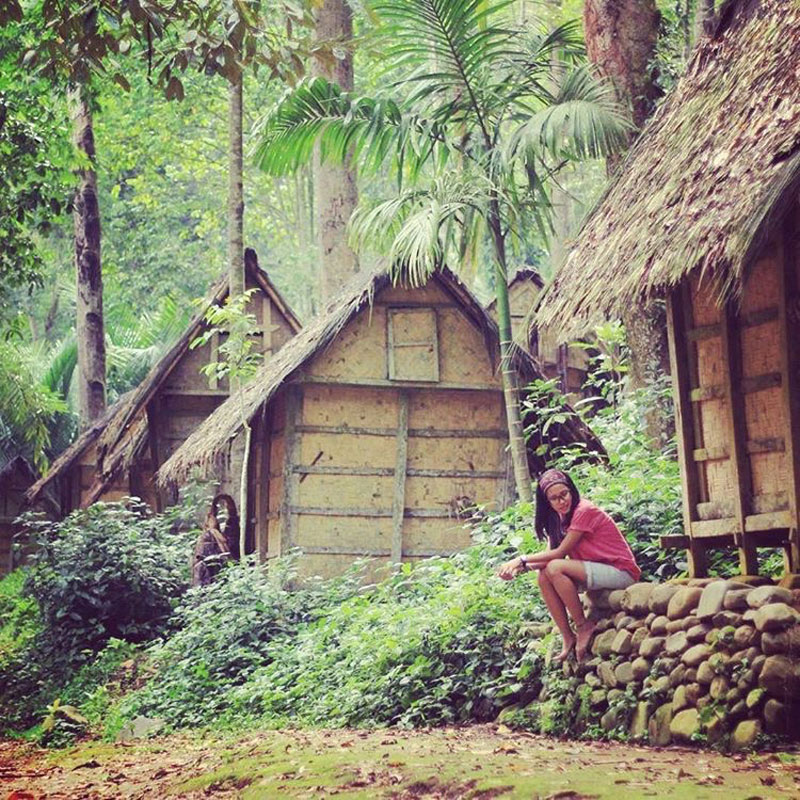
Foreigners are not allowed to enter the villages of Baduy Dalam, and only local Indonesian travellers are allowed in. Strictly no photos are allowed in Baduy Dalam villages.
And just don’t forget the most important thing during your visit – respect their culture!
The Baduy Tribe
1-d. Learn about the local Chinese culture: Benteng Heritage Museum
Banten was a famous port for many international traders and immigrants in the past. That includes the ethnic Chinese who arrived since the 1400s. They were later known as ‘Cina Benteng’ (Benteng Chinese), referring to the area as ‘Benteng’ (meaning ‘fortress’, that was once present).
The Benteng Chinese has been acculturating and assimilating with the local Sunda-Betawi culture since, though they still keep some of their Chinese roots, such as celebrating major Chinese cultural events like the Chinese New Year.
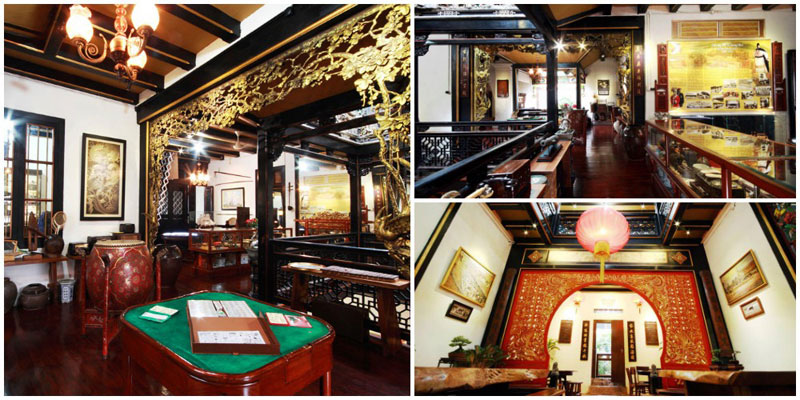
The Benteng Heritage Museum puts serious effort to preserve those historical memories and cultural artifacts, including traditional utensils and trinkets, etc. The layout of the museum also resembles a typical Chinese home in the past.
You can also visit the nearby Boen Tek Bio Temple, one of the oldest temples in Tangerang, which is only a two-minute walk from the museum!
Museum Benteng Heritage
A chilly city in the south of West Java, Sukabumi has long been dubbed as ‘the next Puncak’. Sadly, it is not there yet, because of many factors such as the readiness of the infrastructure.
Fortunately, several years ago, the Bogor-Sukabumi railway was reactivated. So you don’t need to fight the traffic, and can simply enjoy the two-hour ride, passing by rice fields, mountains, and local villages along the way!
Sukabumi has more destinations than what you know, such as caving, a Thai-style Buddhist temple facing the legendary Southern Sea, a turtle sanctuary, cool surfing spots, and many more.
2-a. Waterfall-Hopping in Geopark Ciletuh and Surade
If island-hopping feels too ordinary for you, waterfall-hopping may rejuvenate your mind.
Due to its hilly geographical position, Sukabumi is home to a dozen waterfalls. And first of all, you should know that the word ‘curug’ means ‘waterfall’ in Sundanese.
Don’t want to go far? The 54-meter-tall Curug Cibeureum at the foot of Mount Gede is not far from the city. You just need to walk for about an hour from Pondok Halimun (a tea plantation).
Another waterfall that not too far from the city is Curug Sawer, which close to Situ Gunung.
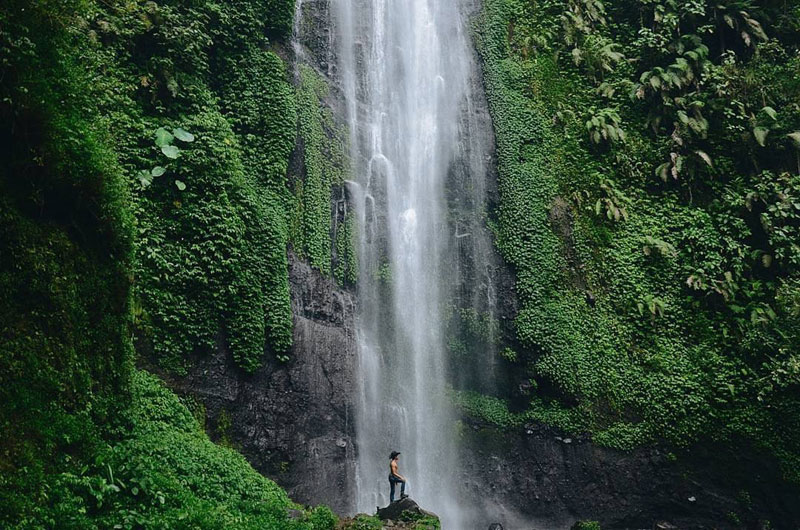

If you love the thrill of a greater challenge, you can travel to Surade in Southwest Sukabumi, where you will find the triplet falls Curug Cikaso, which stands at 80 meters tall. You’ll reach it within a 10-minute walk, or you can also hire a boat to get there.
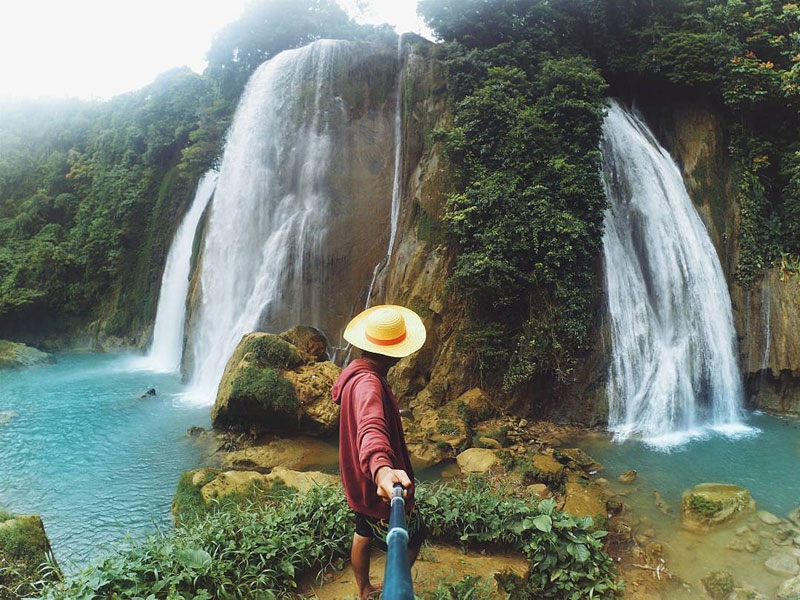
And don’t miss the impressive Curug Cigangsa nearby!
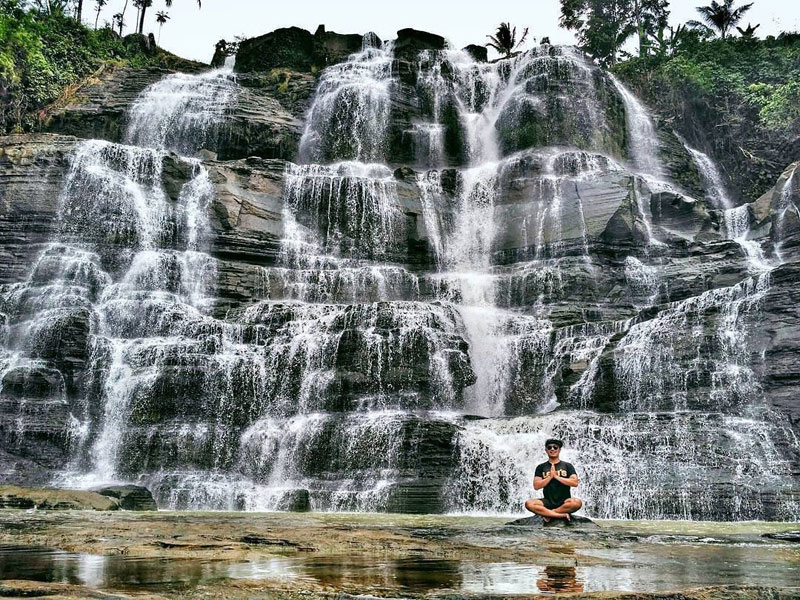
Three to four hours from Sukabumi lies an area that’s gaining popularity recently – Ciletuh Geopark, which accommodates at least nine waterfalls, including Curug Awang that resembles a mini Niagara Falls.
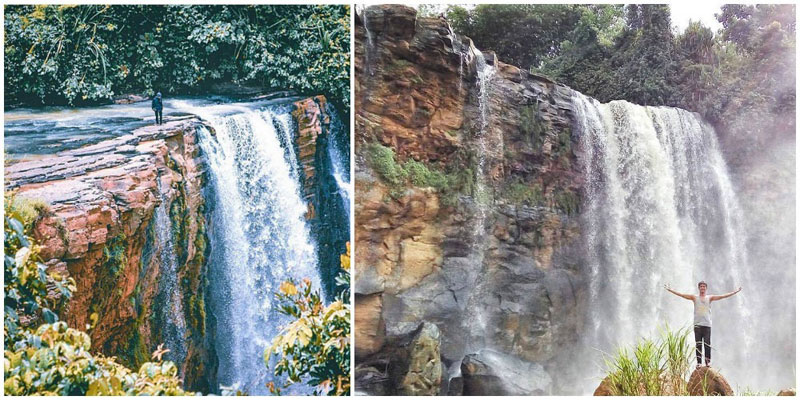
Don’t miss Tebing Panenjoan, a gorgeous lookout spot before you enter Ciletuh Geopark!
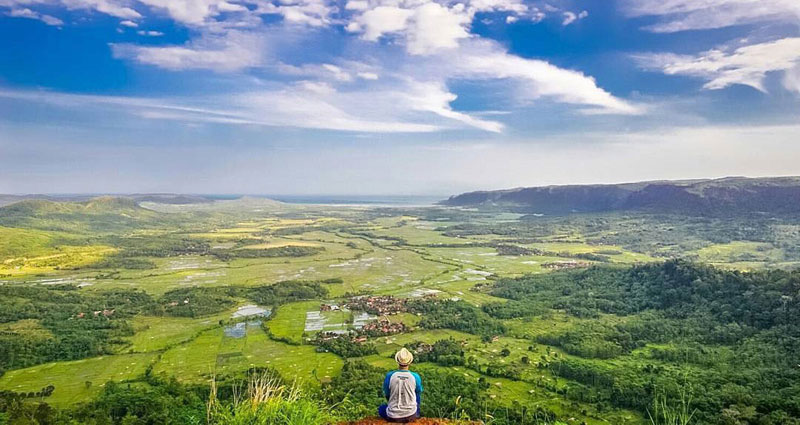
Ciletuh Geopark and Surade (Curug Cikaso and Curug Cibeureum)
2-b. Explore the ‘Lost Pyramid’ in Gunung Padang Megalithic Site, Cianjur (2 hours from Sukabumi)
Want to know how it feels to be Indiana Jones or Lara Croft? You need to make a visit to this ancient megalithic temple founded on a 100-meter-tall hill.
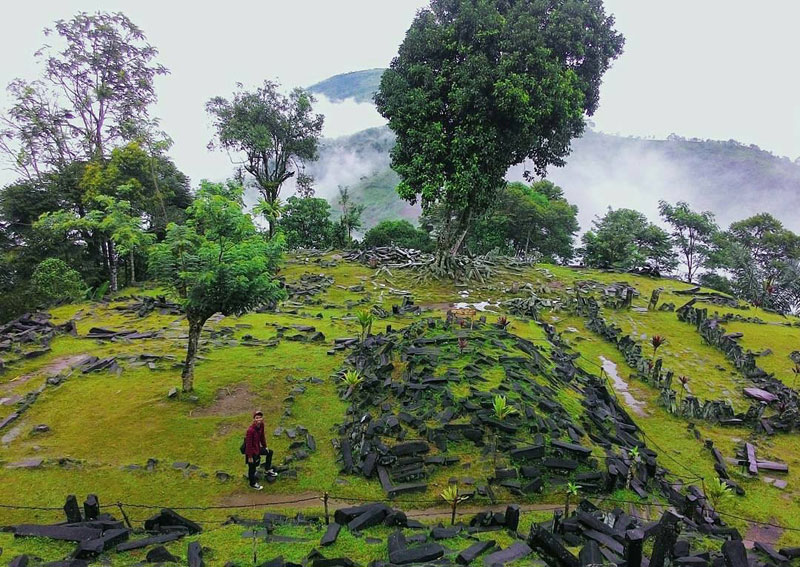
Gunung Padang is one of the oldest and largest megalithic sites in Southeast Asia. Some pseudoscience lovers even believe that it could be a pyramid which lies on this hill, buried under the soil, and dates back to 9,000 – 20,000 years ago!
Reaching the top requires a 20-minute hike up a stone path. Visitors will be greeted by a large tree in the middle of the first and largest terrace.
As you move up, the platforms become smaller until you reach the top, a symbolism of the layers of ascending authority in society in the past.
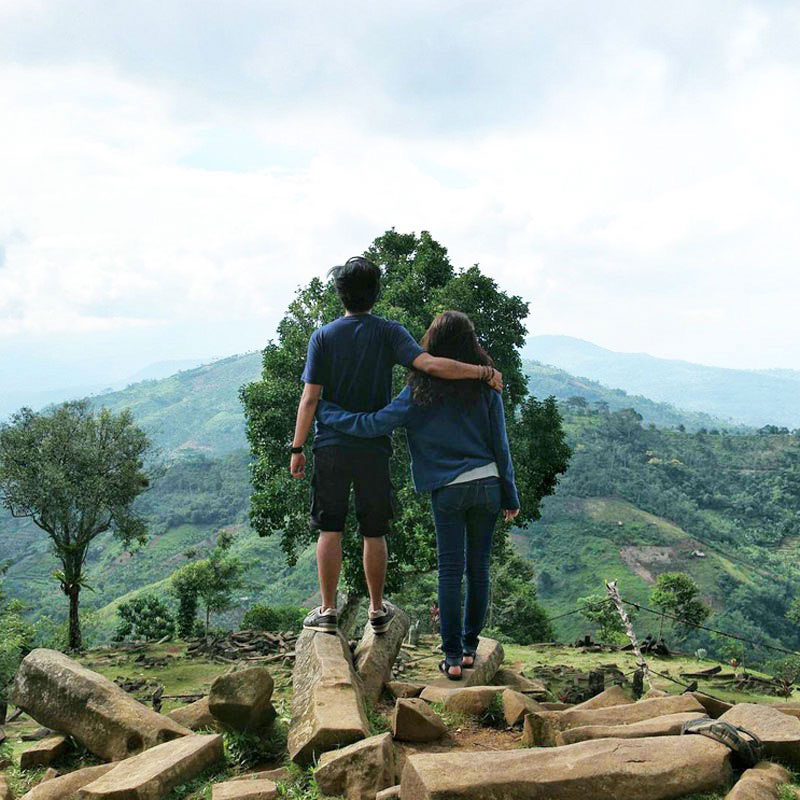
When you stand on the ancient place of worship surrounded by volcanoes and trees, the mesmerizing serenity you take in will bring about a picture of how life once was in prehistoric times. Muse about the significance of residing in the highest terrace, while gazing at the life and wilderness below.
Gunung Padang Megalithic Site, Karyamukti, Cianjur, West Java
2-c. Glamp and water raft at Bravo Adventure
Are you looking for some outback experience, but can’t bear to leave your comfy bed? Want to enjoy being in the midst of lush greenery, but don’t want to trek into the depths of the forest?
Conclusion – camping is not for you. Glamping (which stands for ‘glamorous camping’ ) is.
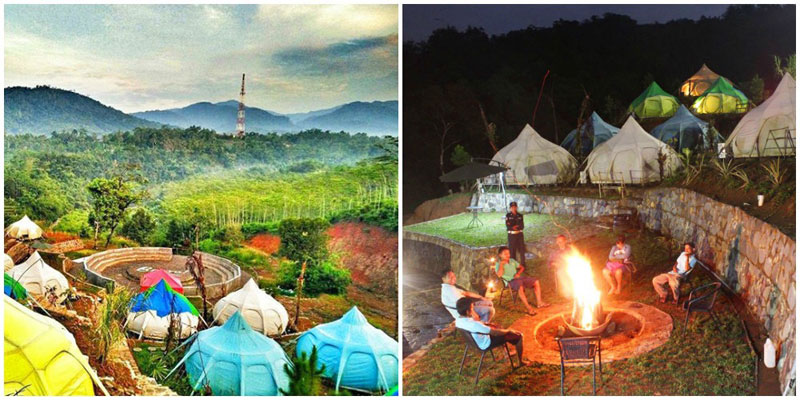
And Bravo Adventure can be a perfect place for you! Here, the elements of nature are blended into luxurious camping facilities.
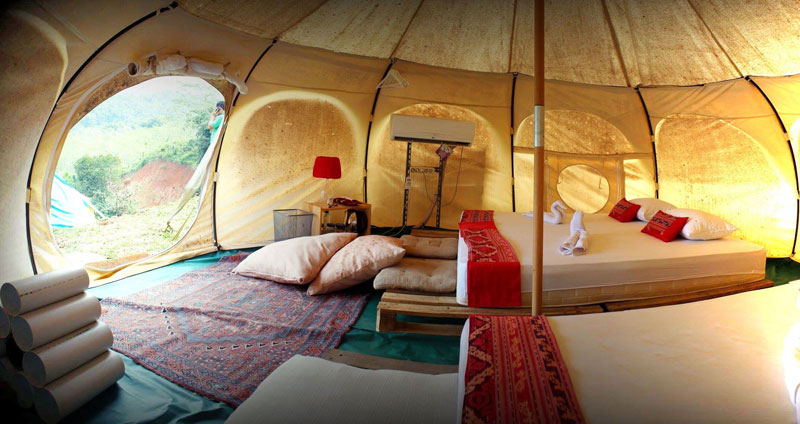
As it is in Citarik, which is famous for white-water rafting, you can enjoy the activity with your family and friends! The river is among the best in Indonesia to experience rafting on!

Does this sound comfortably adventurous enough for you?
2-d. Sit by Your Own Little Lake in the Middle of the Woods: Situ Gunung, Sukabumi
How many times have we felt our hearts quieten when we spend time by a lake in the middle of the woods?
Situated at the foot of Mount Gede (the other side of Puncak, Bogor) lies a hidden gem many city dwellers tend to forget.
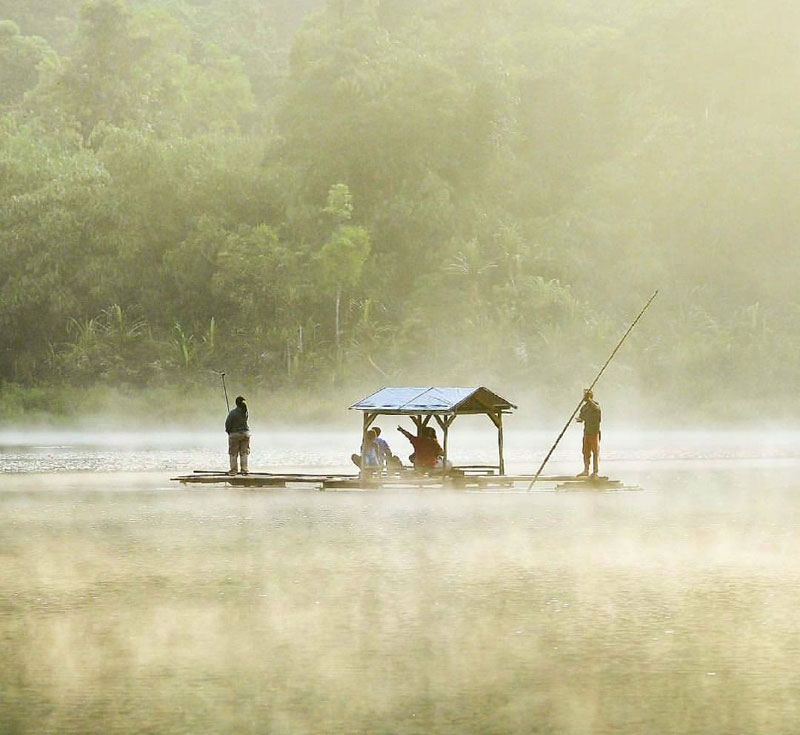
Only four hours away from both Jakarta and Bandung, Situ Gunung is located in the extremely vast Gede-Pangrango National Park. With several hundred meters in width, canoeing across would require some effort.
The sheer size of the premises, coupled with little interest from locals, makes exploring the jungle treks feel like you are the only people there. You don’t even need to go during a weekday just to avoid the crowd.
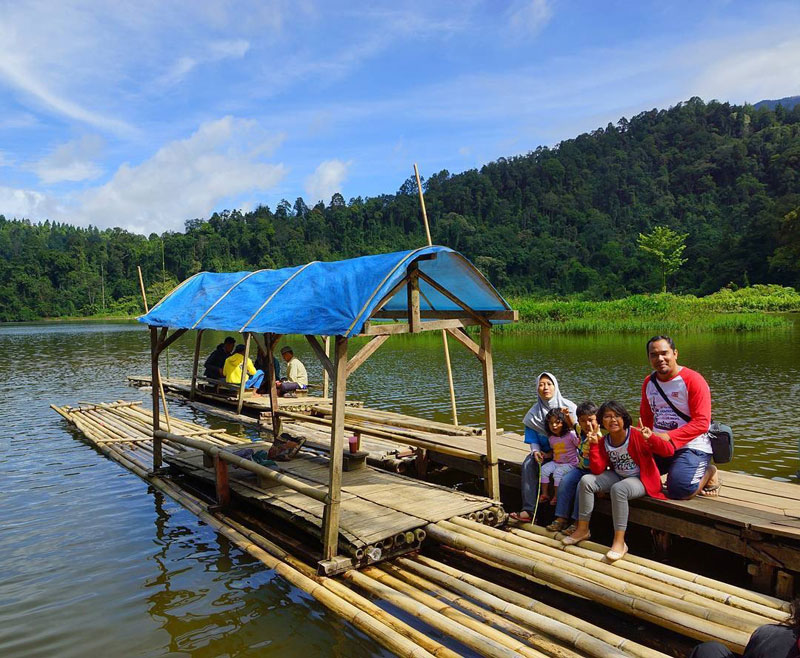
If you can’t bear to leave, you can even rent one of the several villas in the area.
For a more intimate experience with nature, you can set up a tent in the open campground provided. Just make sure to inform the guards for safety reasons.
Situ Gunung, Sukabumi
3. Explore caves, mountains and green terraces in Cirebon
Bluntly speaking, Cirebon is probably the least popular among other destinations on our list, as tourism is not as big here as compared to Bali or Yogyakarta.
But hey, this underdog has some big surprises for us!
A coastal city located north of Java, Cirebon is right next to the border of West and Central Java. The location has historically attracted Javanese, Sundanese, Arabic, Chinese, and other ethnic groups, and they soon settled down in Cirebon after. The origins of the word “Cirebon” may mean ‘mixed’ due to its role as a cultural melting pot.
If you’re traveling from Jakarta, the city can be reached by public transport (train or bus) or you can drive eastward, which may take around 4 hours (220 km).
But it will all be worth it – keep your eyes peeled for interesting discoveries along the way!
3-a. Wander into the Flintstone ‘cave’: Sunyaragi Cave
Do you think this cave is natural?
It may look so natural, but unfortunately we need to disappoint you – this had been built more than 300 years ago (though was rebuilt and repaired multiple times)!
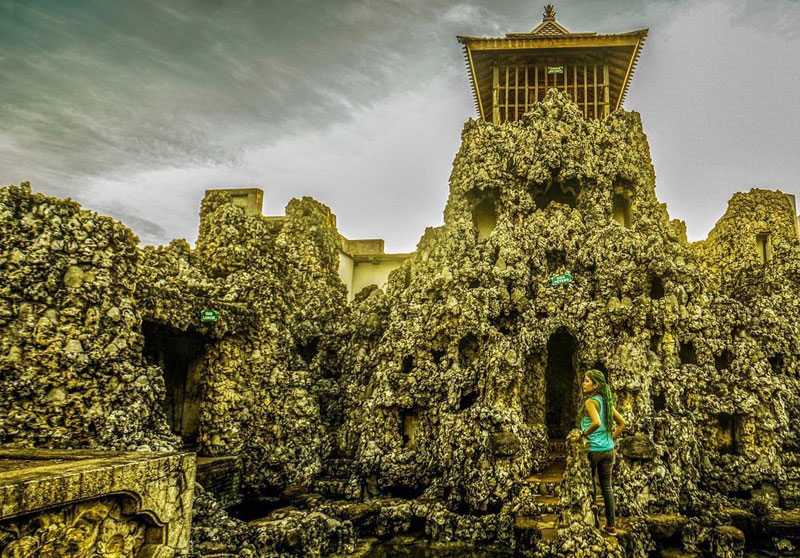
Sunyaragi Cave is actually not a real cave, but it is said so as it has many dark spots that resemble caves.
Some said it was initially built as a water palace for the Sultans of Cirebon while the surrounding area was a lake before got drained, while others said it was meant to be a relaxation and meditation spot for the royal families since the word ‘sunyaragi’ means ‘the quiet body’ in Sanskrit.
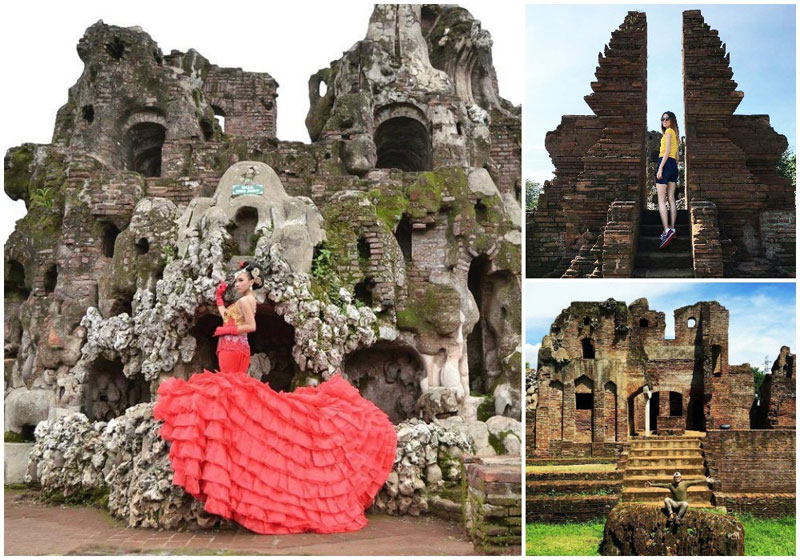
While exploring the Flintstone-like complex, you would notice that the ornaments decorating this impressive site are derived from a mix of various influences – local culture, Hindu, Islam, Chinese, and even European.
Pay attention to the sculptures, gazebo, ceramics, ladders, windows, and you would see different cultures infused in this historical place!
Sunyaragi Cave (Goa Sunyaragi)
3-b. Conquer The Highest Peak in West Java – Mount Ceremai National Park
Mount Ceremai in the southwest of Cirebon is home to the highest point in West Java, at 3,078 meters high. That reputation should give sufficient reason why
getting to its peak could be your coolest story to share with your colleagues while returning to your routine on Monday!
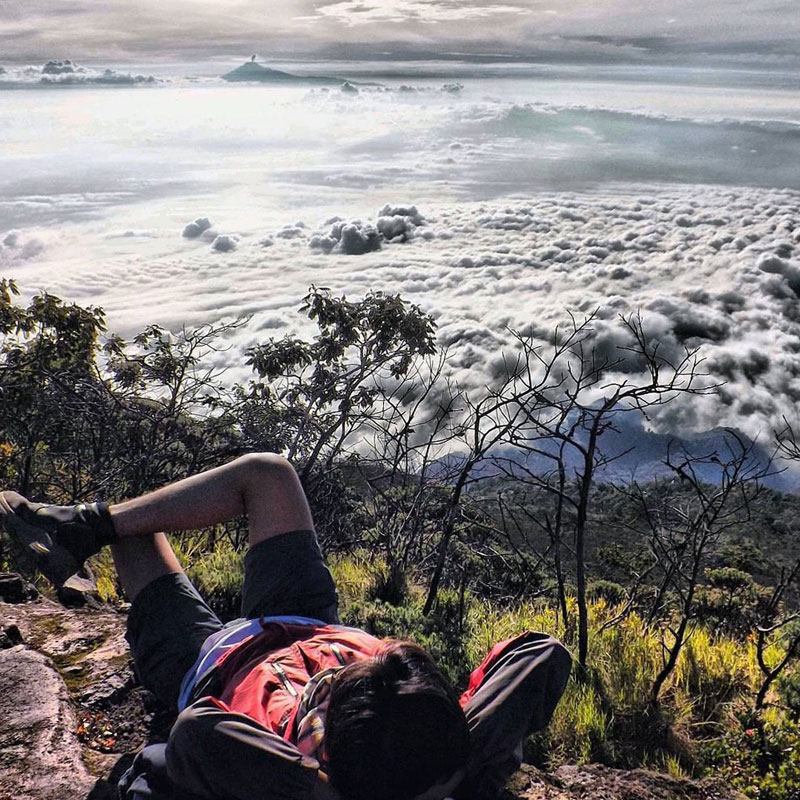
Prepare for a 12-hour return journey (and bring enough water as there are no water sources up there), during which most people would spend one night to camp and do the ‘summit attack’ while trying to catch the sunrise.
Once you arrive at the summit, you can enjoy the view from the top as well as the scenery of other peaks in Java, such as Mount Cikuray and Mount Slamet.
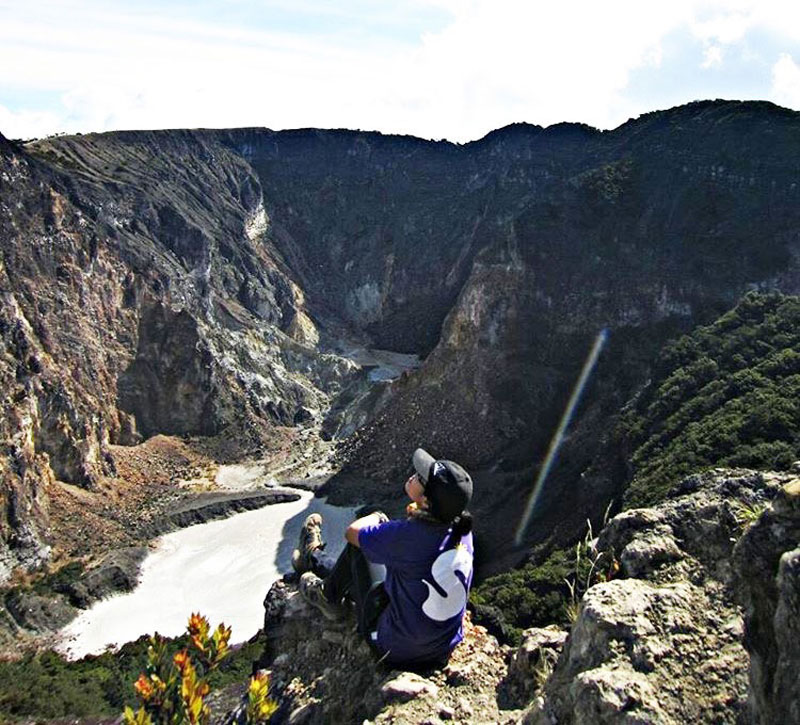
And it’s not just the highest point, but also the crater rim of Mount Ceremei!
Some light information: Did you know, the name ‘Mount Ceremei’ is colloquially known as ‘Ciremai’ or ‘Ciremay’? And some syllables pronounced in Sundanese often become a joke for Indonesians (not an offensive one, but just as a light gag between friends). For example, many people assume Sundanese can’t pronounce ‘f’ as ‘ef’ correctly, they pronounce it as ‘eph’ with closed lips. Hey, who said so? That’s clearly ‘dephamation’!
Mount Ceremei National Park (Gunung Ceremei)
3-c. Magnificent Green Terraces Tucked Away: Argapura, Majalengka
Looking at these beautiful terraces, you would think they are in Tegalalang (Ubud) or Jatiluwih in Bali?
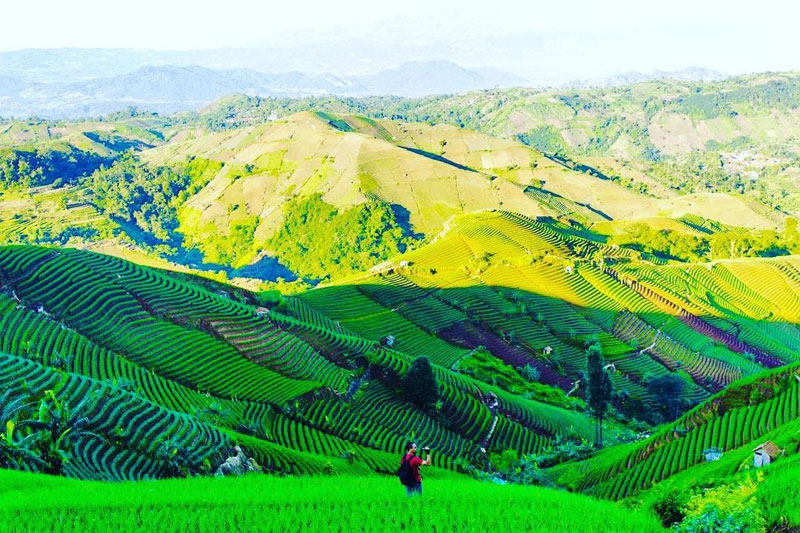
No, you don’t have to travel that far from Jakarta. You can see it this beautiful sight in Argapura (Majalengka), which you will pass by before reaching Cirebon when travelling from Jakarta, after you have driven for around 3 to 4 hours.
Relatively hidden, Argapura holds the best seat to its greenery on the top of Sunda British Hill. This stunning location promises clear blue sky, white fluffy clouds, the silhouette of hills in the distance, and a crisp cool breeze.

If nature is the best medicine, Argapura would surely be the best therapy that everyone will appreciate.
Argapura, Majalengka
4. Discover the remote island of Krakatau
We bring you the legendary volcano with a lot of spelling alternatives – Cracatoa, Krakatoa, Krakatau, …. Cockatoo (just kidding!).
Let’s just stick with ‘Krakatau’ here, as has been written in official records.
Krakatau is a volcanic island located west of Java and south of Sumatra. It’s actually pretty remote! Adventurers out there – are you tempted yet?
Back in 1883, its eruption was the loudest ever in modern human history. The sound could even be heard from Perth (Western Australia) and some other parts of the world nearly 5,000 km away!
Here are three essential things you must experience in Krakatau:
4-a. Sail and Admire the Mighty Volcano of Anak Krakatau!
Although the mountain is no longer there due to the enormous eruption, a new island has been formed from the previous caldera – Anak Krakatau, where volcanic activity can also be detected. That’s where you will be heading towards!
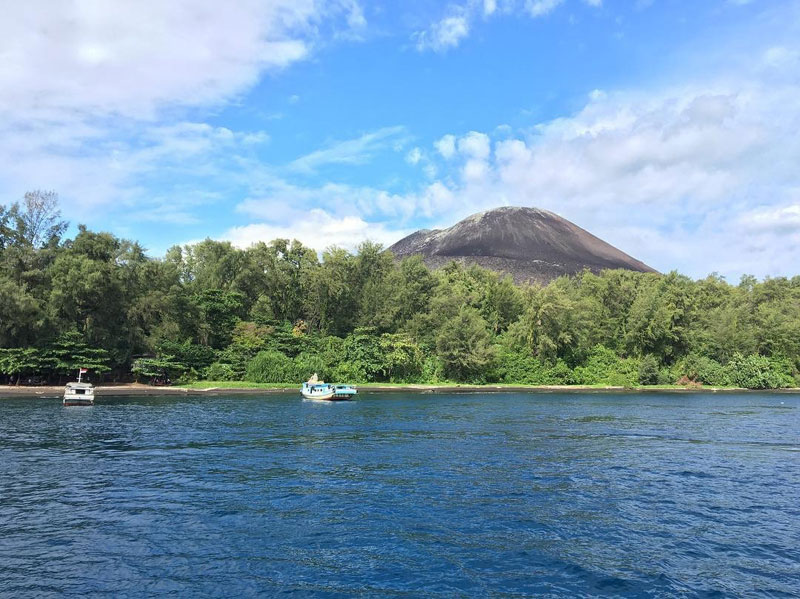
You can sail your own private yacht from Banten, or rent a traditional boat called ‘jukung’ from Sebesi Island (the closest inhabited island from Krakatau). And as you glide along the sea, savour the moment as you gradually approach the smoking mountain in the middle of the sea. The moment of adventure!
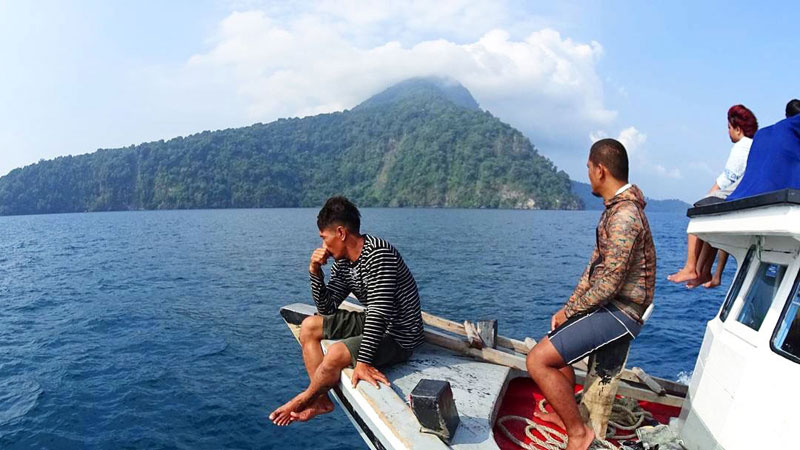
Prepare a IDR 1,000 note – no, not to pay for an entrance fee, but check the picture on it. Do you notice what’s on the note?
Yes, it’s Krakatau!
4-b. Hike up Mount Anak Krakatau (and say hi to huge monitor lizards!)
What’s better than seeing and admiring the tremendous volcano?
Of course to set foot on it!
You can go for an easy 30-minute hike, and if you’re lucky, you may encounter some wandering monitor lizards. They can be on the beach or on the way up the volcano. (We are preparing you mentally in advance, so you won’t scream when you find one staring at you.) But don’t worry, they are harmless 🙂
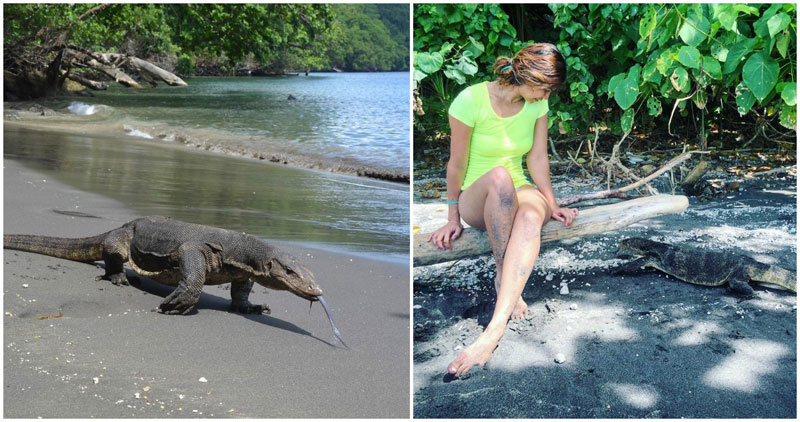
When you reach the shoulder of the volcano, you can see the islands surrounding the volcano – a breathtaking sight! Even better if you are there at sunrise or sunset. If you are following a tour, you can discuss the timing you want to reach with your tour organizer or the captain of your boat.
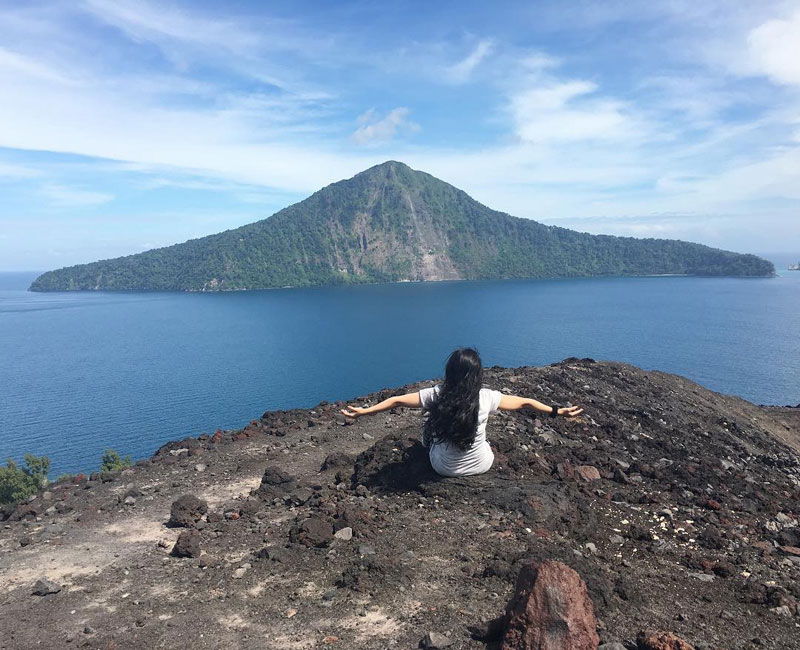
Note: You would not be able to reach the summit due to safety reasons.
4-c. Explore the underwater secrets of Krakatau
Krakatau may not boast of unique and exotic diving spots you can find in other parts of Indonesia, but it still has a rich underwater kingdom for you to uncover. Although you may not dive here, if you have not snorkeled before, this is a good place to start.
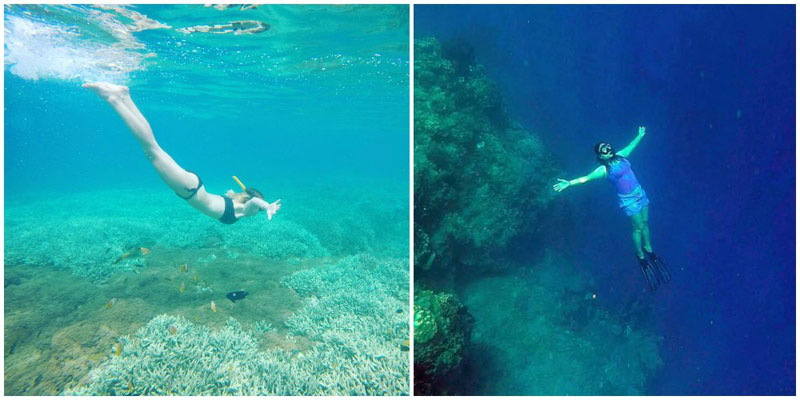
One of the most popular spots is Lagoon Cabe, located in the south of Anak Krakatau.
You can appreciate the wonderful corals and colorful fish swimming around you, including these clownfish guarding their anemone house!
Krakatau
5. Get in touch with nature and traditions: Bogor
‘Buitenzorg’ was the original name of this satellite city from Jakarta. According to several sources, this means ‘worry-free’ in Dutch – an excellent reason for residents in busy Jakarta to escape from the city.
Its proximity to Jakarta (if you don’t drive, you can take the train or bus), friendlier weather, and unique places to dine in may become the main reasons why Jakartans really love to visit Bogor.
And Puncak would be the top spot in most Jakartans’ minds if they are asked about their favourite place in Bogor. A beautiful and chilly area with green tea plantation, it’s simply a perfect family destination!
But that’s not all to Bogor! Let us share more with you:
5-a. Visit the Oldest Botanical Garden in Southeast Asia – Bogor Botanical Garden (Kebun Raya Bogor)
Bogor is also known as ‘Rain City’ since it’s raining almost every day – and this is one advantage of building the botanical garden here.
Bogor Botanical Garden is undisputedly the most prominent botanical garden in Indonesia and the oldest in Southeast Asia, built in 1817 when Indonesia was still called ‘East Indies’. This 87-hectare garden hosts around 14,000 specimens of trees.
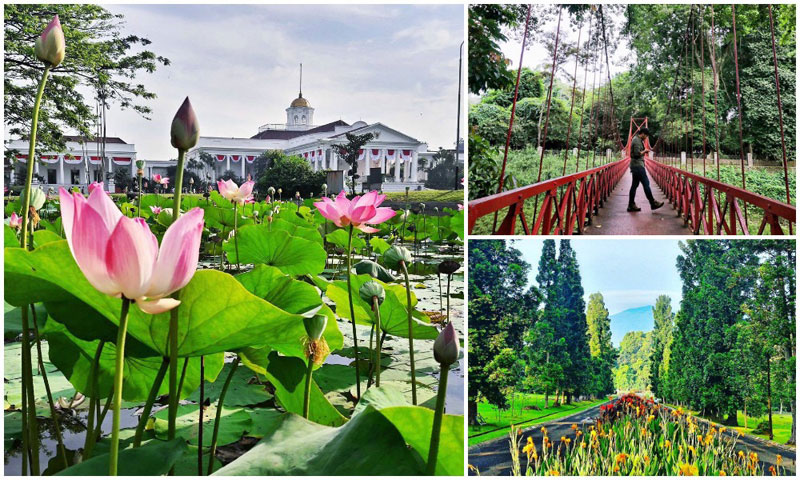
One unique bloom is the Titan Arum, which is the largest unbranched flowering species. It can reach 2 meters tall, and if you’re near, you’ll catch a whiff of its rotten smell. The locals call it ‘Bunga Bangkai’, which literally means ‘the carcass flower’.
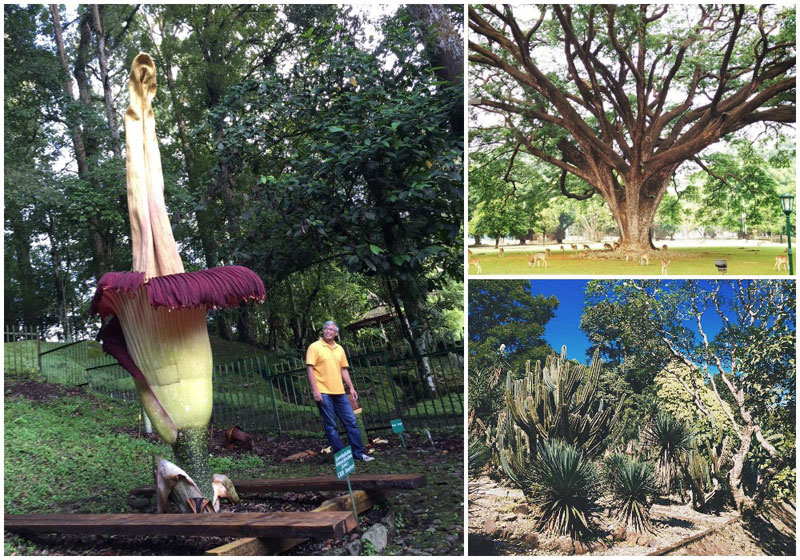
Bogor Botanical Garden (Kebun Raya Bogor)
5-b. Experience exotic traditional festivals: Seren Taun and Cap Go Meh Festivals
Tired of just sightseeing? Want to experience the culture of Bogor and its traditions?
Don’t miss their harvest festival and unique Indo Chinese Lunar New Year celebrations!
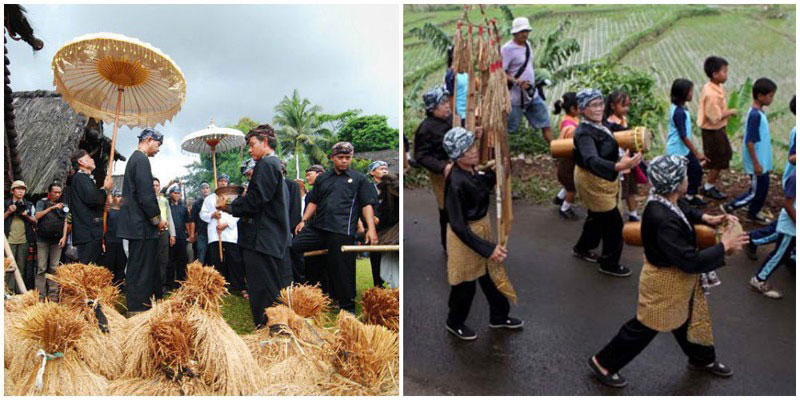
Their rice harvest festival is known as the Seren Taun Festival, celebrated by the Sundanese (people of West Java) as a symbol of gratitude toward God for the current harvest, as well as a request for His blessing for the upcoming season.
One place where you can experience this unique festival is at Kampung Budaya Sindangbarang House, a traditional Sundanese village. Check out our story on Bogor to get a better idea of the village.
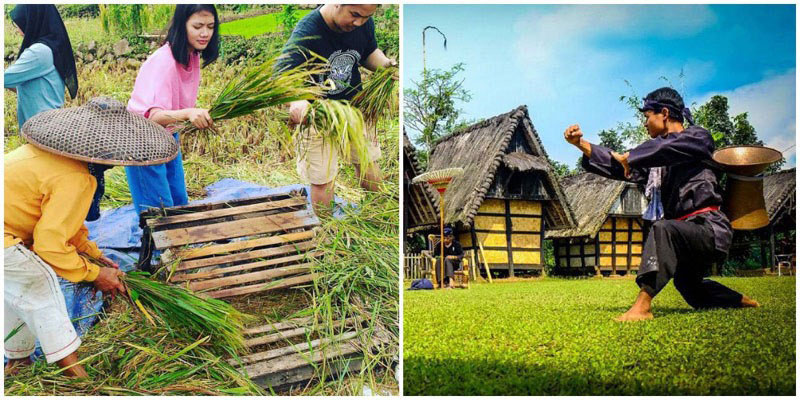
Also, like many cities in Indonesia and Southeast Asia, Bogor has been influenced by Chinese culture, which has inspired a wider celebration of the Cap Go Meh festival in the city (essentially the 15th day of the Chinese Lunar New Year).
However, the parade doesn’t only show the Chinese culture (think lion-dragon dance, lampions, etc) or its acculturation with the Sundanese, but involves other local cultures too.
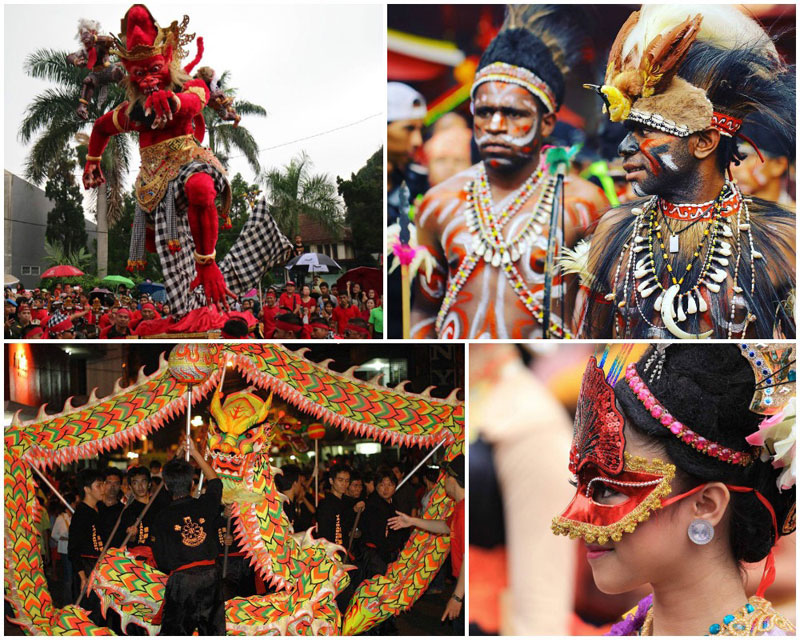
Catch the parade along the main street of Bogor, with around 10,000 performers! What a celebration of Indonesia’s diversity.
Seren Taun at Kampung Budaya Sindangbarang House
Cap Go Meh Festival
5-c. The perfect hike in West Java: Mount Gede-Pangrango National Park
Mount Gede-Pangrango is a National Park whose area crosses three cities: Bogor, Sukabumi, and Cianjur. So you can imagine vast forest that you will be exploring during the hike.

Mount Pangrango (3,019 meters) is the second highest mountain in West Java, while Mount Gede is 2,958-meters high. Although the hike can be rather challenging, you’ll be able to do it as long as you’re physically fit enough to walk for hours.
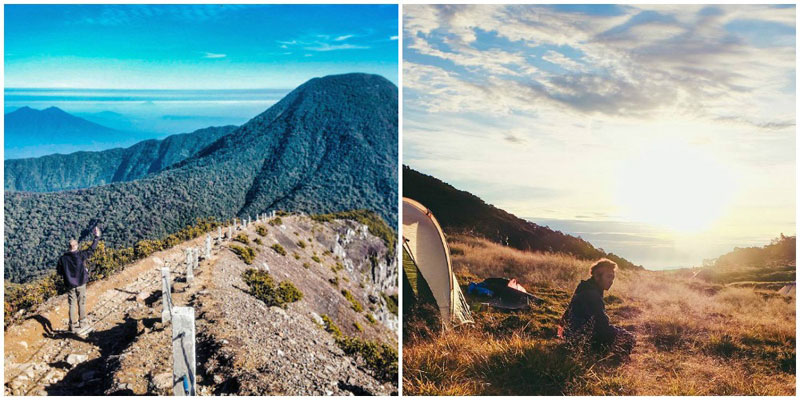
Two days and one night would be the ideal duration you should set aside for the hike. You can camp overnight on Saturday evening, catch the sunrise, hike up to the peak, and return to Jakarta in the afternoon.
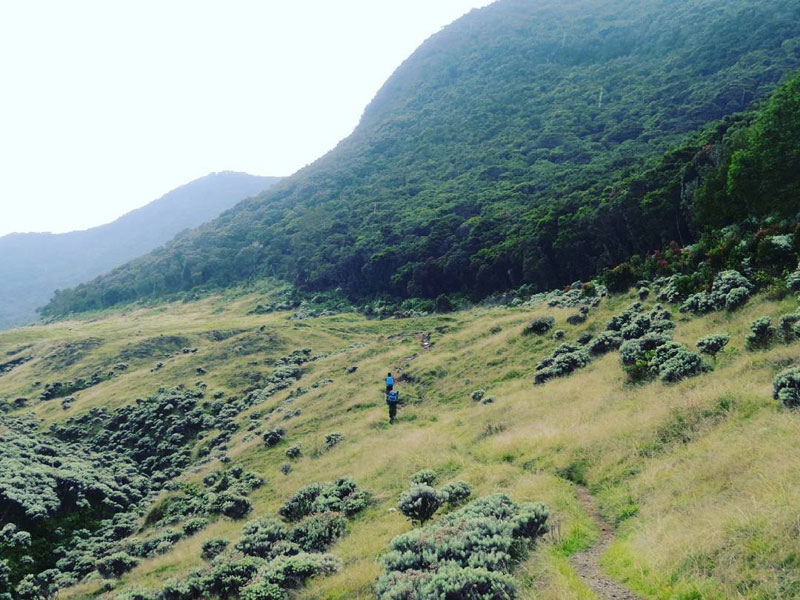
Does it sound like the perfect plan to unwind in the midst of lush nature over the weekend?
Gunung Gede-Pangrango National Park
6. Exotic island getaway closest to Jakarta: Thousand Islands (Pulau Seribu)
Tired of Bali? Looking for a different exotic island getaway in Indonesia?
You must not miss the famed Thousand Islands.
The name ‘Thousand Islands’ refers to the chain of islands around the region, while the word ‘Seribu’ literally means ‘a thousand’ in Bahasa Indonesia. The area is also known as a marine national park, you know exactly what it implies – many snorkeling and diving spots to explore!
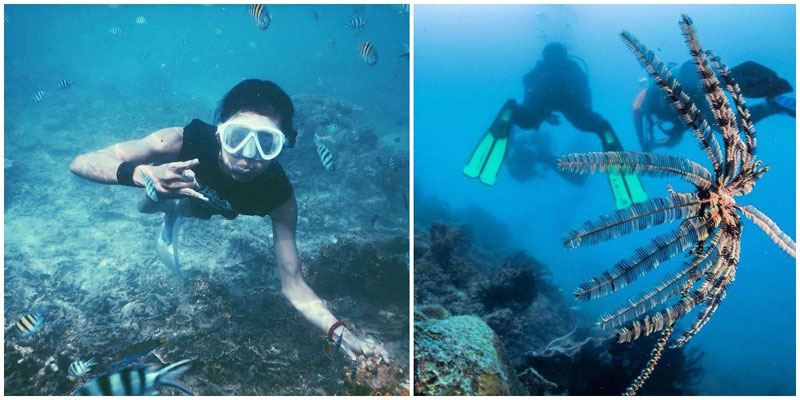
With the growing popularity of Thousand Islands, you have a wide range of accommodation options as well, from exclusive private islands to humble villas managed by the locals – so choose one that your wallet is comfortable with!
6-a. Stay in a water villa at Pulau Ayer Resort
Located less than 30 minutes from Marina Ancol in Jakarta, Pulau Ayer is known as an exclusive but relatively affordable island.
In the past, it used to be a retreat destination for the former kings of the Thousand Islands, as well as the first President of the Republic of Indonesia. So you can imagine – your holiday is fit for a king!
Pulau Ayer is equipped with more than 40 cottages, which include bungalows on land and overwater villas! From your floating cottages, you can enjoy the glorious view and harmonious sound of the sea.
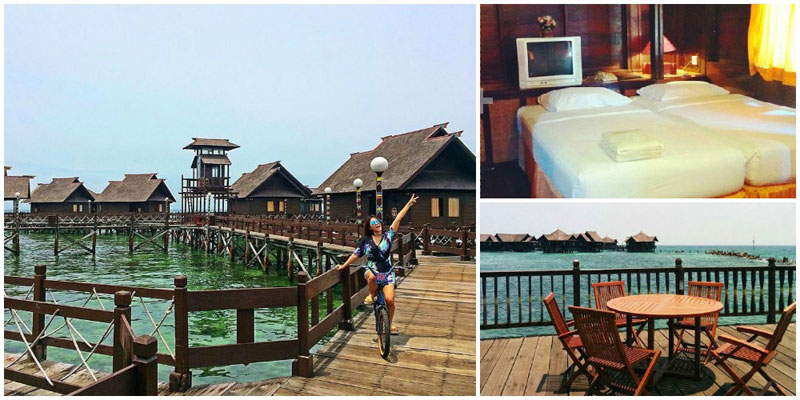
If you’re tired and are lazy to explore the underwater in the open sea, the resort has much more to offer – you can take a dip in their pool, canoe, let your kids run around in the playground, and even arrange to do some watersports!
Simply put, an idyllic and nearby getaway from busy Jakarta!
Check Rate on Agoda
6-b. Time-Travel and marvel at the Colonial Ruins
Did you know that besides underwater activities and watersports, there are intriguing historical sites on some islands that are worth visiting too?
Kelor Island, Cipir Island, and Onrust Island are among the best to do historical sightseeing. On these islands, you can see the remains of Dutch colonial buildings, such as the fort-tower, colonial houses, cemeteries, barracks and old hospitals.
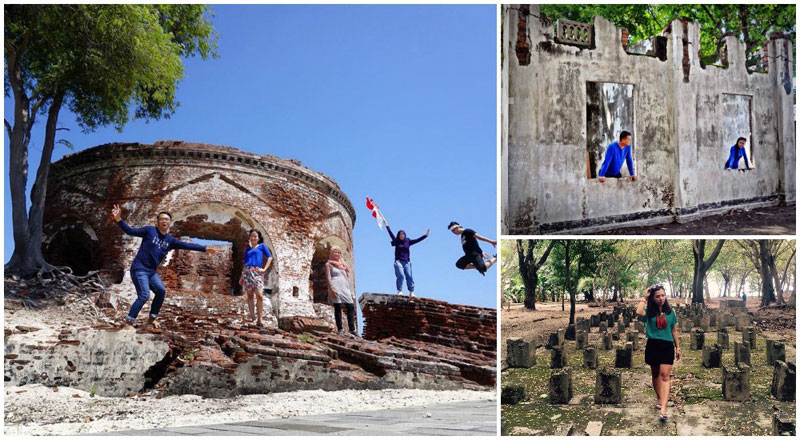
These pictures show the iconic Martello Tower in Kelor, the ex-quarantine house and hospital in Cipir, and some ruins in Onrust.
6-c. Jump from the Iconic Bridge on Tidung Island
Tidung Island is one of the most popular islands in Thousand Islands. Located close to some snorkeling spots, the island has many accommodation options, watersport facilities, and an iconic bridge.
The 800-meter-long bridge connects two islands situated next to each other, Tidung Besar (which means ‘Big Tidung’) and Tidung Kecil (which unpredictably means ‘Small Tidung’ ).
And how can you have fun here?
Jump from the 8-meter high bridge into the beautiful waters below!
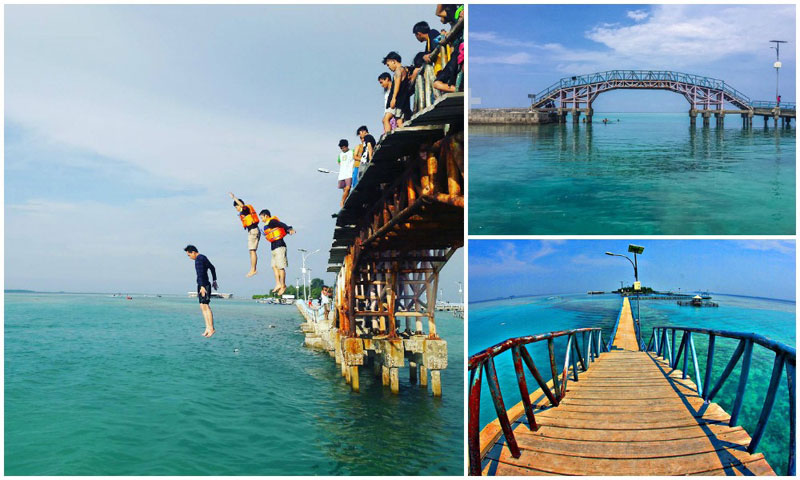
The bridge has a rather cheesy name – ‘Love Bridge’ (Jembatan Cinta). And you don’t need to be a psychic to guess the myth that follows after the name – it is said that you would find your true love once you jump from the bridge!
Perhaps that would give you more motivation!
Thousand Island
7. Jakartans’ Favorite Chilly Escape: Bandung
“The land of Pasundan was created when God is smiling,” said M.A.W Brouwer, a Dutch who spent most of his life in Indonesia.
Pasundan is the old name of West Java, whose capital city is Bandung. That saying is still relevant now, as we still love to travel to Bandung and the beautiful natural attractions around it.
With so many activities you can get up to in Bandung, what can you do if you’re just there over the weekend? We give our best recommendations.
7-a. A House on the top of a Waterfall at Situ Patenggang
Just 10 minutes away from the well-known ‘Kawah Putih’ lies a lake that you would definitely regret to miss.
Legend claims that Prince Putra Prabu of 15th Century West Java and Putri Titisan Dewi met in a heart-shaped island in the middle of Situ Patenggang, after being separated for years due to the difference in their beliefs.
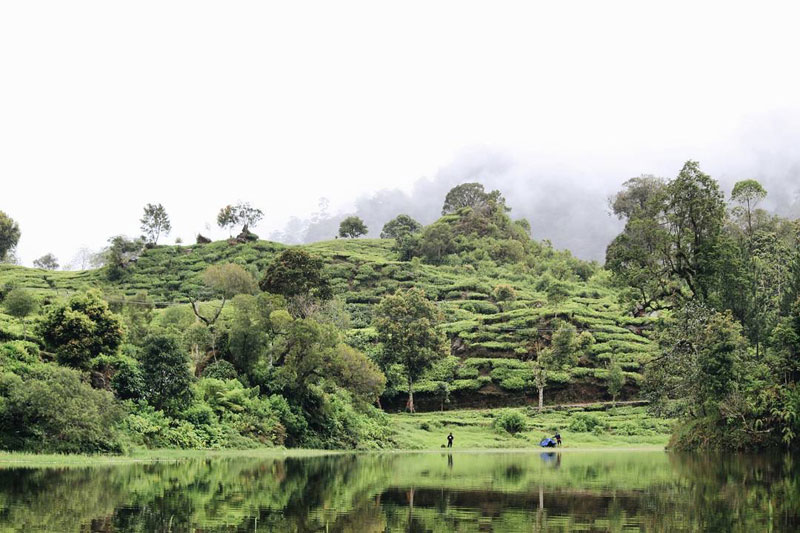
The surrounding view is purely breathtaking – tea plantations circle the area, so it looks as though someone had spread a green wool rug across the landscape.
There’s even a house right on top of a natural waterfall!
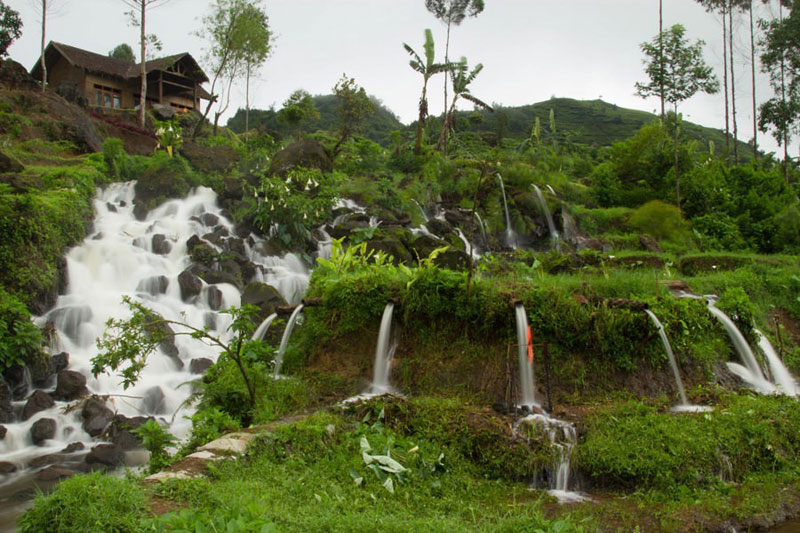
Situ Patenggang
7-b. Lay Eyes on the Magnificent Javanese Niagara: Curug Malela
Standing at 70 meters tall and 50 meters wide, Curug Malela can be considered as Bandung’s largest waterfall.
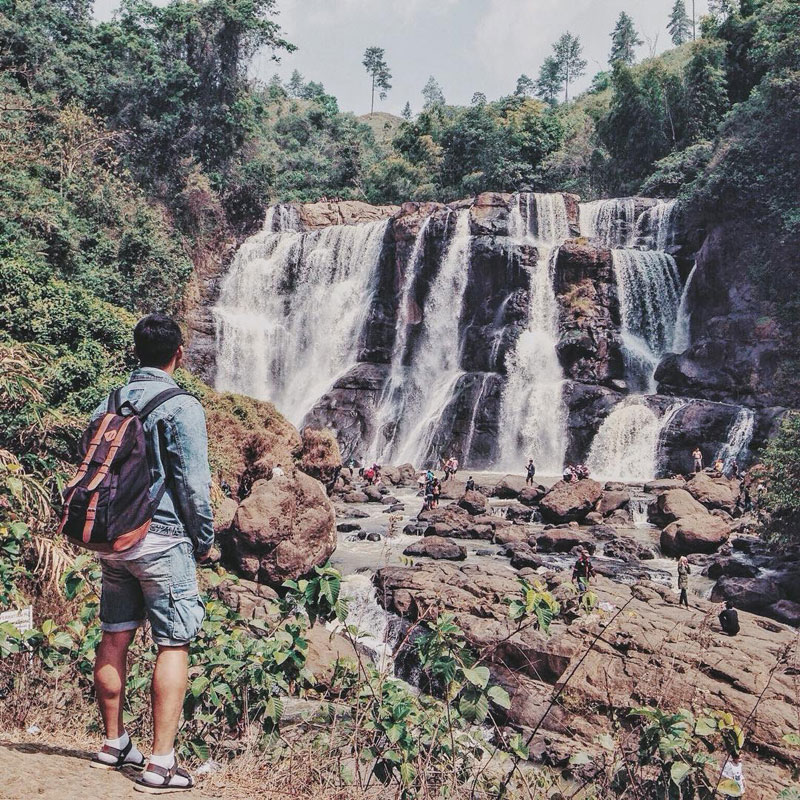
Either because of the distance (it’s about a three-hour drive from the city), or the rough terrain (much needs to be conquered to get there!), Curug Malela is the kind of place that people talk about but have never really gotten the chance to see it for themselves.
So if you get there – congrats – achievement unlocked!
Curug Malela
7-c. A Divine Experience in Nature’s Hidden Paradise – Sanghyang Heuleut, Cipatat
Tucked away in West Bandung in a remote area of Cipatat, Sanghyang Heuleut is a small pond surrounded by large white cliffs, lush jungle and a small waterfall as the water source.
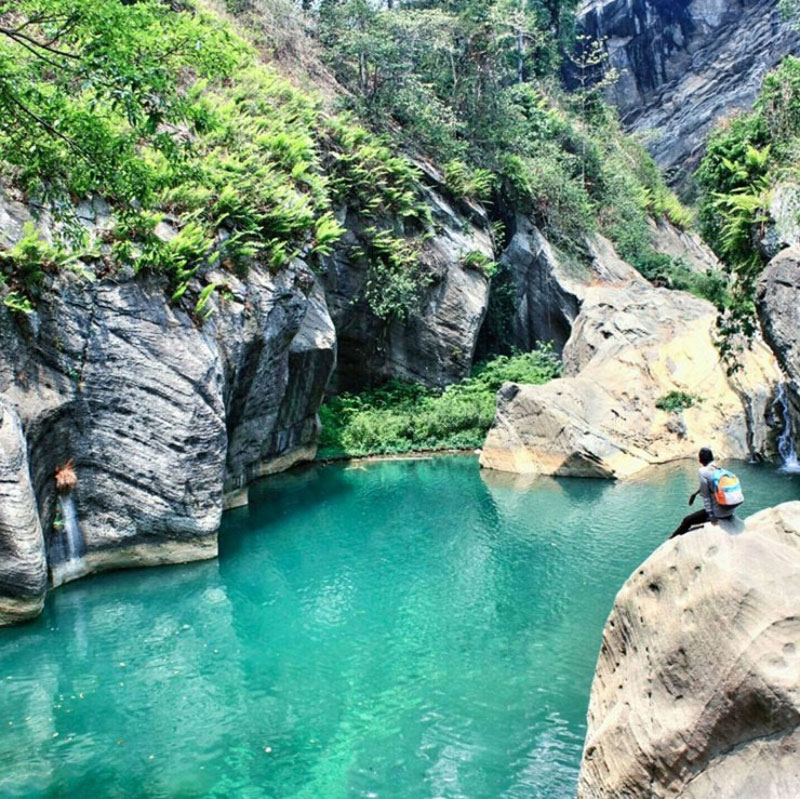
It flows to the stream of Citarum river which is also part of a hydropower plant.
Through geographic evaluation, Sanghyang Heuleut is deemed as a prehistoric pond that has existed through time.
Legend also has it that its secluded location was meant for the strategic bathing place for goddesses.
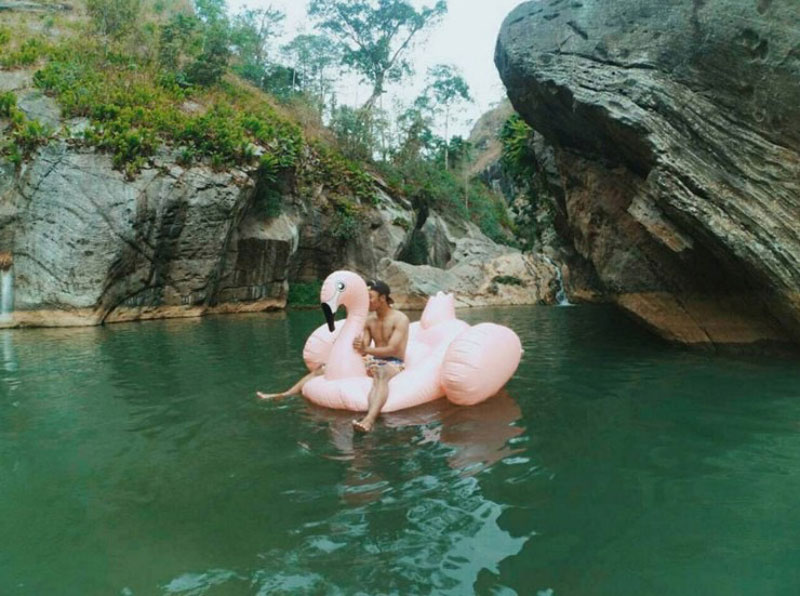
It’s no wonder that the place was deemed “sanghyang” which means “holy” while “heuleut” means “the space between 2 worlds”, referring to the way this holy place is reserved for divine beings.
Sanghyang Heuleut, Cipatat
7-d. The Mystical lake above the Clouds: Kawah Putih
This Crater Lake, formed after Mount Patuha blew its top, has been considered a mystical one – birds that flew near the area would die, which made people reluctant to find out what was really up there, until the 19th century, when a German botanist discovered a beautiful crater lake.
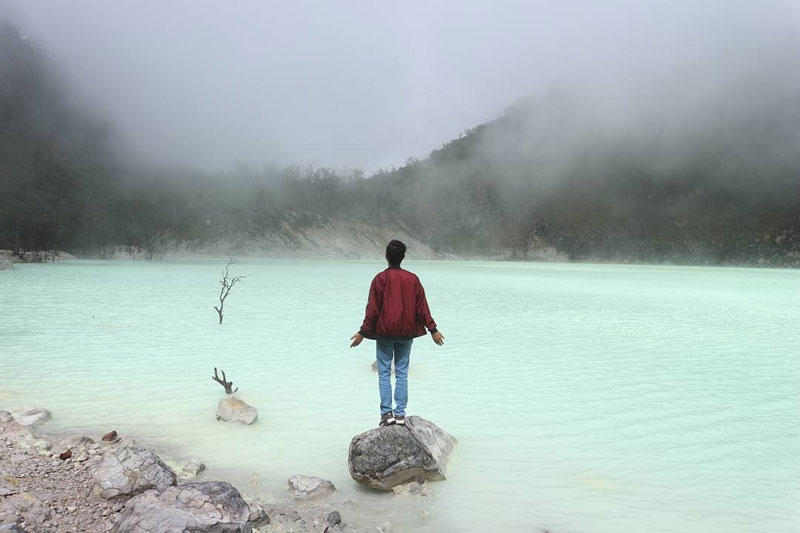
Its crystal blue water changes with the weather conditions and is lined with fine white sand, giving visitors an otherworldly experience. Even the vegetation around the area appears different compared to those below.
Although situated at the top of a mountain, essential facilities such as toilets and parking space are available, along with small eateries.
Kawah Putih
Have you decided which would would be your best ideal weekend destination? If you can’t decide, why not take one trip every weekend – you’ll have seven fulfilling weekends ahead!
If you know of any other destinations in Indonesia that can be a perfect weekend holiday from Jakarta, let us know in the comment sections below!
PLEASE NOTE: All the above information is correct at the date of publication. If you come across any changes or updates, please let us know and we will update the information accordingly. Thank you!
Tell us
| PLEASE NOTE: All the above information is correct at the date of publication. If you come across any changes or updates, please let us know and we will update the information accordingly. Thank you! Tell us |
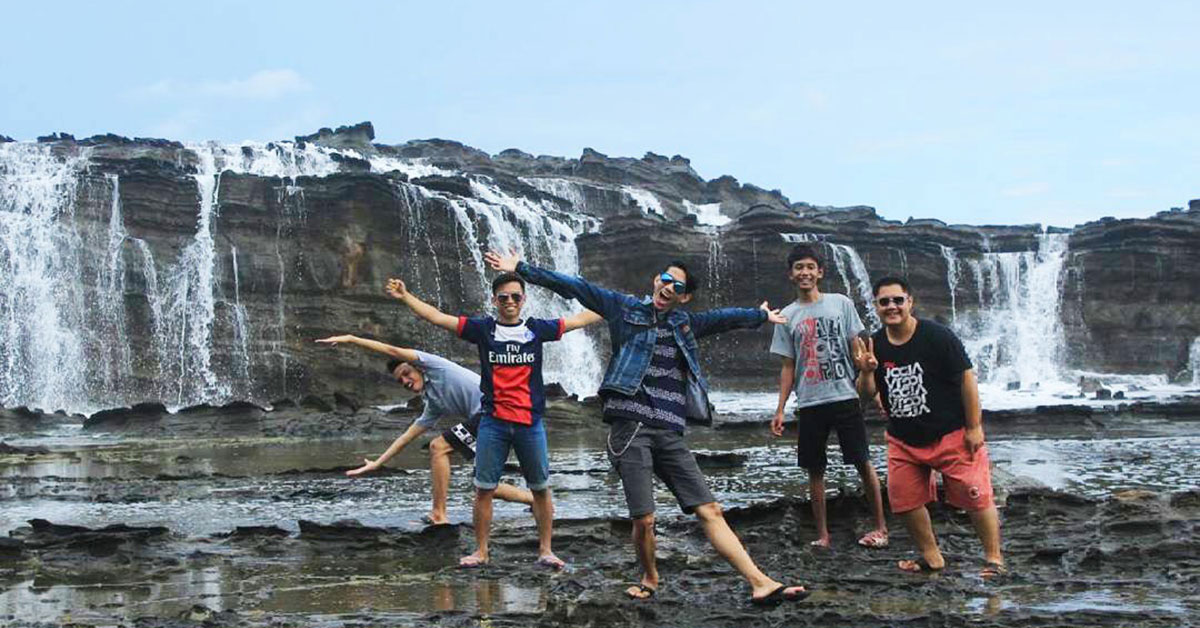


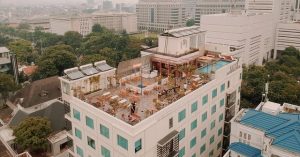

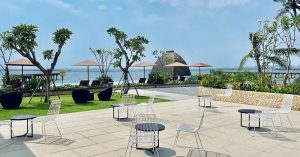







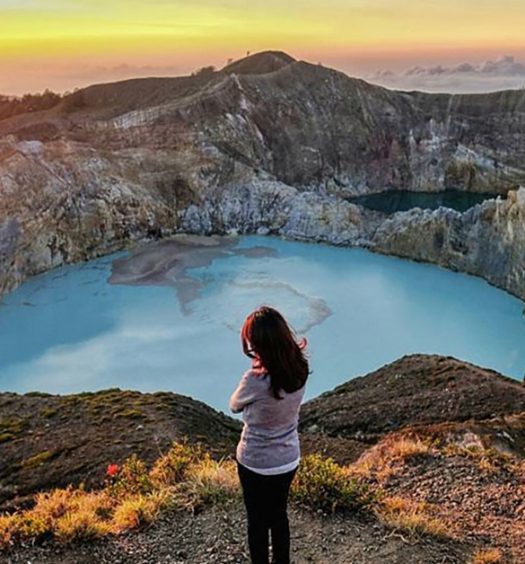
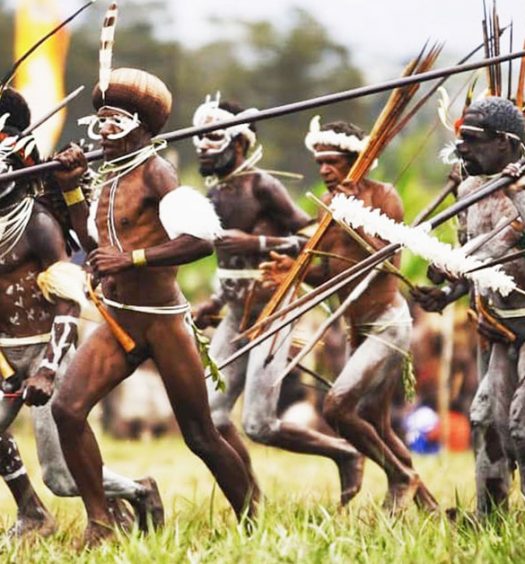
 Bahasa Indonesia
Bahasa Indonesia 简体中文 (Chinese)
简体中文 (Chinese)